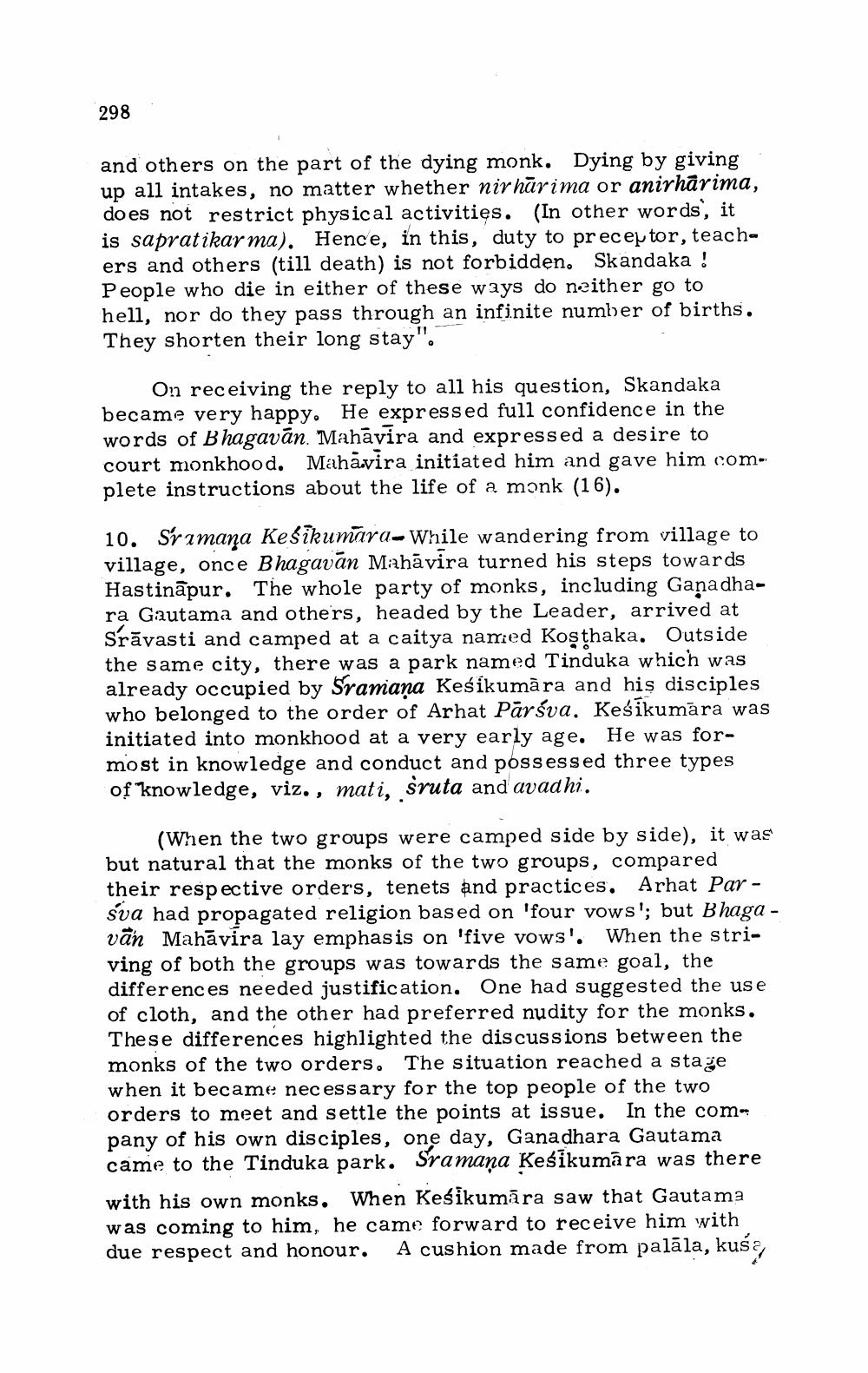________________
298
and others on the part of the dying monk. Dying by giving up all intakes, no matter whether nir hārima or anirharima, does not restrict physical activities. (In other words, it is sapratikar ma). Hence, in this, duty to preceptor, teachers and others (till death) is not forbidden. Skandaka! People who die in either of these ways do neither go to hell, nor do they pass through an infinite number of births. They shorten their long stay".
On receiving the reply to all his question, Skandaka became very happy. He expressed full confidence in the words of Bhagavān. Mahavira and expressed a desire to court monkhood. Mahavira initiated him and gave him complete instructions about the life of a monk (16).
10. Sramaņa Kesikumara-While wandering from village to village, once Bhagavān Mahāvira turned his steps towards Hastināpur. The whole party of monks, including Ganadhara Gautama and others, headed by the Leader, arrived at Srāvasti and camped at a caitya nanied Kosthaka. Outside the same city, there was a park named Tinduka which was already occupied by Sramaņa Keśikumāra and his disciples who belonged to the order of Arhat Pārsva. Kesikumāra was initiated into monkhood at a very early age. He was formost in knowledge and conduct and possessed three types of knowledge, viz., mati, sruta and avadhi.
(When the two groups were camped side by side), it was but natural that the monks of the two groups, compared their respective orders, tenets and practices, Arhat Par - sva had propagated religion based on 'four vows'; but Bhaga - vān Mahāvira lay emphasis on 'five vows'. When the striving of both the groups was towards the same goal, the differences needed justification. One had suggested the use of cloth, and the other had preferred nudity for the monks. These differences highlighted the discussions between the monks of the two orders. The situation reached a staze when it became necessary for the top people of the two orders to meet and settle the points at issue. In the company of his own disciples, one day, Gana dhara Gautama came to the Tinduka park. Sramaņa Keśikumāra was there with his own monks. When Keśikumāra saw that Gautama was coming to him, he came forward to receive him with due respect and honour. A cushion made from palāla, kusa,




